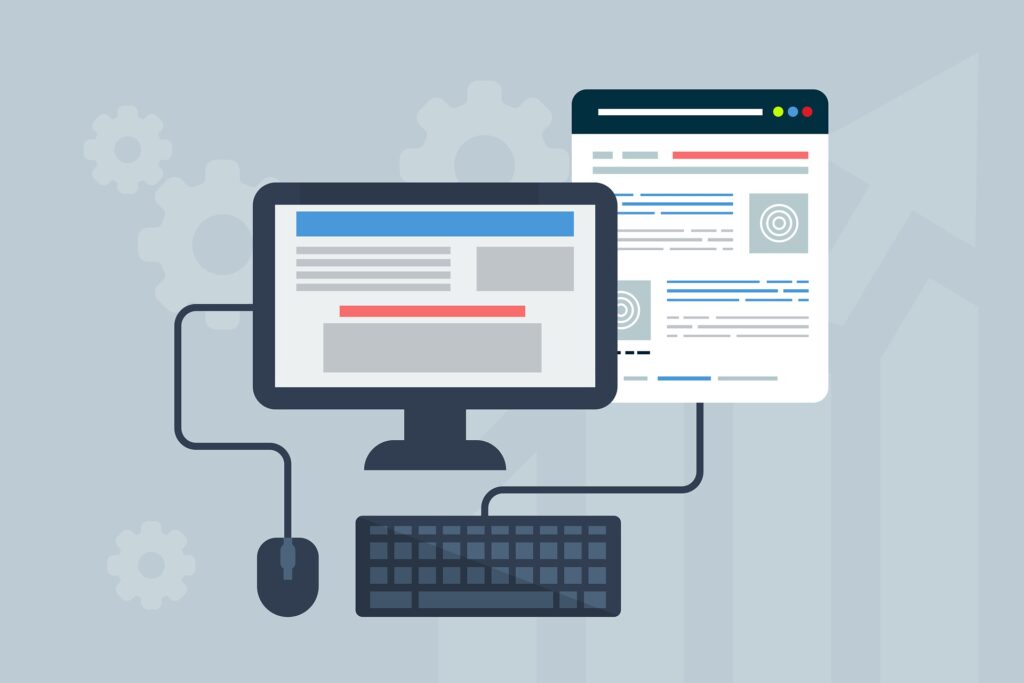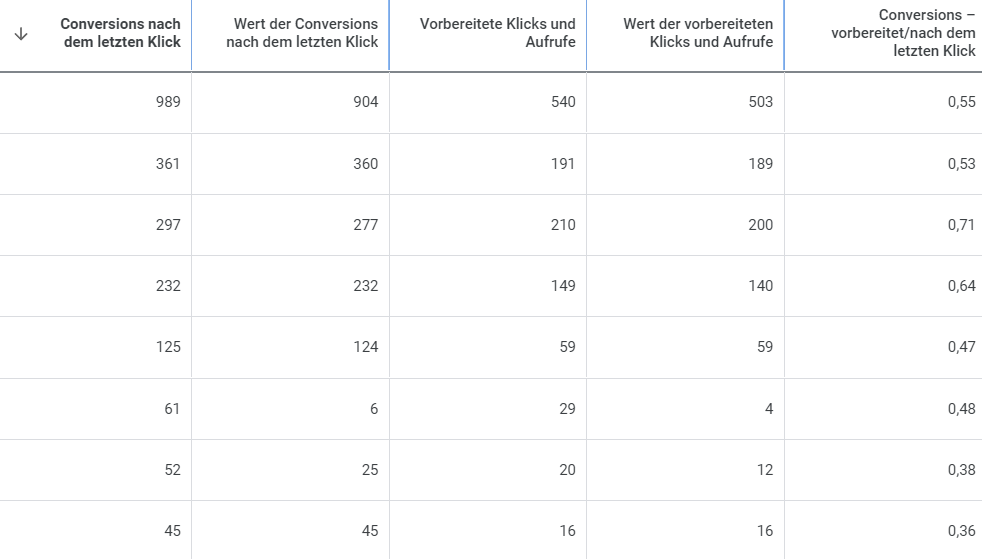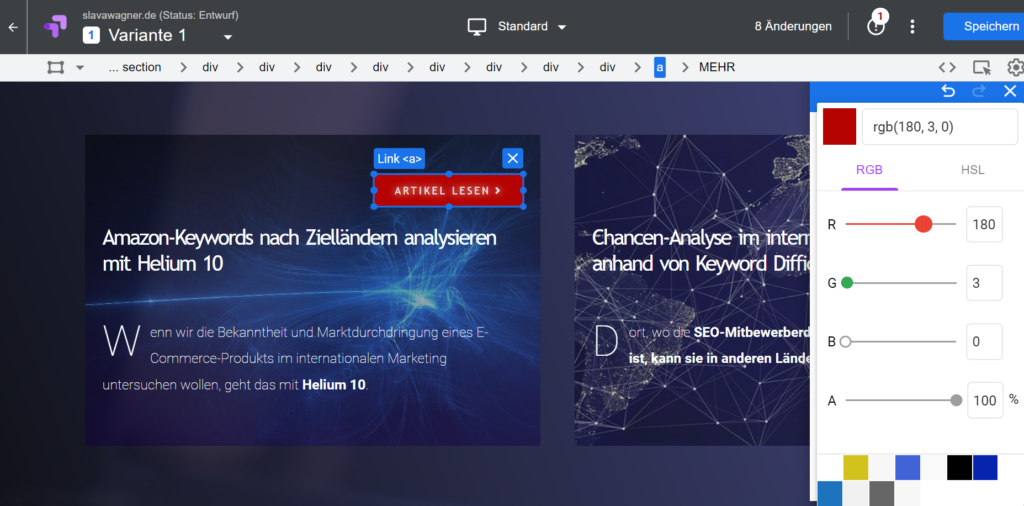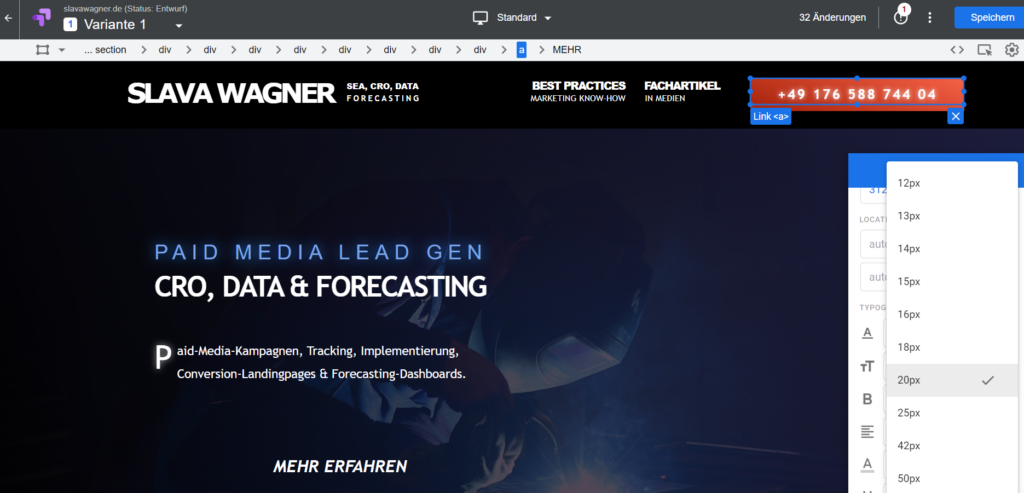Increase conversion rates with website A/B testing via Google Optimize

If we want to find out which website version gives the best conversion rate, we can do that with an A/B test. With Google Optimize, different variants are delivered to different users at the same time and tested for the conversion rate.
Google Optimize can deliver different website versions to users in parallel for test purposes. The delivery can either be made in equal shares to user groups of the same percentage, or be calibrated in a user-defined way. So if a new website version is tested against the original, and 200 users come to that landing page in a week, 100 of them would only ever see the original, and the other 100 would only ever see the new version. The versions based on Google Analytics 3 have so far been delivered on the basis of cookies, which is why each user only ever sees the one version of the website intended for them over several sessions. User behavior is then measured against specific target metrics. One of the most important is the conversion rate (German: conversion rate or conversion rate): It indicates the percentage of website visitors who have successfully performed the target action. The higher we can screw this percentage, the more inquiries or sales we will generate on the website.
I. Introduction to 'Conversions'
What is a conversion?
But first of all: What is a conversion anyway? A conversion (German conversion or: transformation) refers to a target action of a user in online advertisements or on the website. A user converts when he is convinced of an action by the attractiveness of the advertising content and carries it out online. An improvement in addressing in advertisements and landing pages increases the likelihood of a conversion along with data-based A/B tests. Conversions can be a wide variety of target actions: In service industries, for example, this would be contact forms sent, information packages downloaded or appointment bookings. For online shops it would be online purchases, and for delivery services it would be purchases and calls. It can be registrations for whitepapers, e-books and webinars, or registrations from a newsletter for a consultation.
How are conversions measured?
Conversion is technically measured directly in ads or using analytics systems on websites. In this way, individual users of a target action can be recorded together with the time, which allows us to track the response. This is called conversion tracking: This allows us to break down the campaign budget into individual conversions that have been achieved and get the cost per conversion, which helps us to compare the efficiency of the campaigns with each other. This in turn avoids wastage. The continuous testing and optimization process is called conversion optimization.
So if we want to determine the best structure and address of our landing page with website A/B tests, the data-based basis here is above all the increase in the number of conversions, which indicates which website version is the best.
Conversions measured directly in ads
Large advertising systems allow measurement of target actions within their platforms that we would otherwise not be able to access with website-based analytics.
- Submitted lead forms (Google Ads, Facebook Ads, LinkedIn Ads)
- Calls from call extensions (Google Ads)
- Measure Searches and Store Visits (Google Ads)
- Event commitments (Facebook Ads)
- New Followers (Facebook Ads)
Conversions, die auf der Website gemessen werden
Auf eigenen Websites hingegen werden Conversions über Webanalytics-Umgebungen gemessen, wie: Google Analytics, Matomo, Adobe Analytics.
- Abgeschickte Kontaktformulare
- Terminbuchungen über einen Konfigurator
- Käufe (diese können in Google Analytics mit genauen Umsätzen gemessen werden)
- Warenkorbabbrüche (die Reduktion von Warenkorbabbrechern wäre ein gesonderter Punkt)
- Heruntergeladene Infopakete
- Anmeldungen zu Webinaren, E-Books und Whitepapern
- Newsletter-Anmeldungen
- Telefonnummer-Anrufweiterleitungen (via Google Tag Manager mit dynamischer Ersetzung der Telefonnummer durch eine Google-Ads-Weiterleitungsnummer, sofern der Nutzer über eine Anzeige kam)
What is conversion lag?
It is important to note that conversions in advertising systems and conversions on websites often use different attributions. It is the case with Google Ads and Google Analytics that different conversion times are specified. The reason for this is: Google Analytics records the time of the actual target action on the website as the conversion time. Google Ads, on the other hand, records a conversion that actually happened on the website and was recorded by Google Analytics retroactively to the ad click that caused it (usually the last click on the ad before a conversion happened on the website , specifically in the Google Ads “last click” attribution model).
Since it can sometimes take a few days for a website visitor to make a decision, there is a time gap between the last click on the ad and the actual conversion on the website – this is the so-called conversion lag.
Attribution models for conversions
The major advertising systems (Google Ads, Meta – Facebook & Instagram Ads, LinkedIn Ads, Microsoft Advertising) offer advertisers the use of various attribution models. These describe how conversions are assigned to individual channels, campaigns and ads – but above all: at which conversion time they are assigned. The Google Ads “last click” attribution model would mean: A website conversion from Google Analytics would be imported into the Google Ads dashboard retrospectively for the time when the last Google Ads click from a campaign took place. So, last click means the last ad click that occurred before the actual website conversion was triggered – regardless of the intervening time period.
With another attribution model, namely the data-driven attribution of Google Ads and Google Analytics, a conversion is broken down equally into the different actions of the user. So if a website visitor clicked on an ad and then immediately bought a product – the conversion value here would be 1. But if the site visitor came to the site from organic search 9 times, and then made a final click before making a purchase from an ad – the Google Ads conversion score would be 0.1 because Google Ads only counts one in ten clicks contributed to get the user to convert.

Example of assisted conversions that feed into whole conversion attribution.
What is a conversion rate?
A conversion rate indicates the percentage of user clicks on the website that ended up converting. In German, this could be translated as conversion rate or conversion rate. In other words: This is the conversion percentage, i.e. the conversion of a website visitor or user to a target action. In locally anchored B2C companies, such as in the catering trade with delivery service, a conversion rate (even with new customer traffic) can be as high as 20%. For more complex B2B landing pages, a conversion rate of 1% – 3% is already a realistic indicator.
Realistic reference values and elements for a stronger conversion rate
A strong conversion rate depends on many different factors, including the basic nature of the offer design, the fit with the target audience and the general structure of the website. If these basics are not consistent and do not yield any conversions at all, then usually no A/B test will help either.
If the foundation of an already functioning conversion rate is there, some structural adjustment screws come into play, the change of which always has an influence on the conversion rate. Experience has shown that across all industries, it is possible to increase the conversion rate by up to 15% through tests. That’s actually not as much as it sounds: if the initial conversion rate is 20% in a local B2C delivery service, for example, you can crank it up to a stable 23%. This has an impact on 1,000 website visitors per month at one location – and at other possible locations as well. However, an increase of a business-critical extent should not be expected here.
Once a successful landing page version has been determined, the element responsible for the conversion rate increase can be set on the actual website and adopted on landing pages with a comparable structure.
Let’s come to the structural adjustment screws mentioned, with which a conversion rate can be tightened safely and reliably in practice:
II. Test configuration with Google Optimize
1. Test button formats and button design
The button as a call-to-action element for calling up an offer or for taking advantage of the same is the central element that consciously or subconsciously encourages users to convert or prevents them from doing so.
Therefore, the following should be tested here via Google Optimize’s drag-and-drop frontend editor:
- size of the button
- color of the button
- font style and font size of the button text
- text content of the button
- position of the button on the landing page
Interesting tip in advance: At first glance, it seems obvious that the button would not only be central, but also decisive for the conversion rate, and would overshadow all other test elements. In practice, this is often not the case: a more prominent position or a design in a conspicuous signal color can just as easily lead to an unchanged conversion rate. Therefore, it is worth doing all the tests one after the other.

Example of a simple button color change using Google Optimize’s frontend editor.
2. Test phone number formats and design
The placement of telephone numbers is certainly not for everyone: There are many sectors in the B2B sector in particular that market such specialized offers that it is not worth putting telephone numbers in the foreground. The callers come, but the majority are not qualified enough to conclude a purchase. For this reason, the qualification is carried out in other ways.
On the other hand, for industries that can certainly generate some sales from the pool of incoming calls, Google Optimize tests on the phone number as an element on the landing page are worthwhile:
- phone number size
- phone number coloring
- position of the phone number on the landing page

Test font sizes.
3. Test product image design
If you use product and offer images that are intended to clearly represent what the user is supposed to claim here, you can test any image content against one another here.
- Test image content
4. Highlight downloads: Test even more buttons
Traditionally, download elements are quite underestimated in their impact on conversion rate, because they often have a decent impact. Downloads can be: information flyers, invitations, overview pages or menus in the catering trade.
Here it is important to design and test the buttons for triggering the PDF download according to the same scheme as in point 1:
- download button size
- download button coloring
- font style and font size of the download button text
- text content of the download button
- position of the download button on the landing page
5. Contact form: test speeches
If there is a landing page in the service area, the contact form for using the offer is the lynchpin for the conversion rate. The approach and design of the call-to-action headlines should be tested here.
- size of the heading
- content of the heading
- font size, typeface and font style of the heading
Run AA test with Google Optimize
When adopting a successfully tested website element on comparable landing pages, one thing is important: testing and monitoring the values on comparable landing pages. For every product, offer and location, there is always a slightly different target group, which in turn can react differently to such adjustments and often also has other, subconscious preferences and behaviors. Testing a successful test variant against the same one on a structurally identical landing page is called an AA test. The best way to do this is with a so-called personalization via Google: Users who want to go to a specific landing page are automatically shown the adapted, personalized version. This then measures the conversion rate once we set up the measurement.
Overview
You might also be interested in:
Reduce bounces with website A/B testing via Google Optimize
What improvements need to be made to the website to reduce the bounce rate?
Improve scroll depth with website A/B testing via Google Optimize
An increased scroll depth ensures that more landing page users actually read the content.

